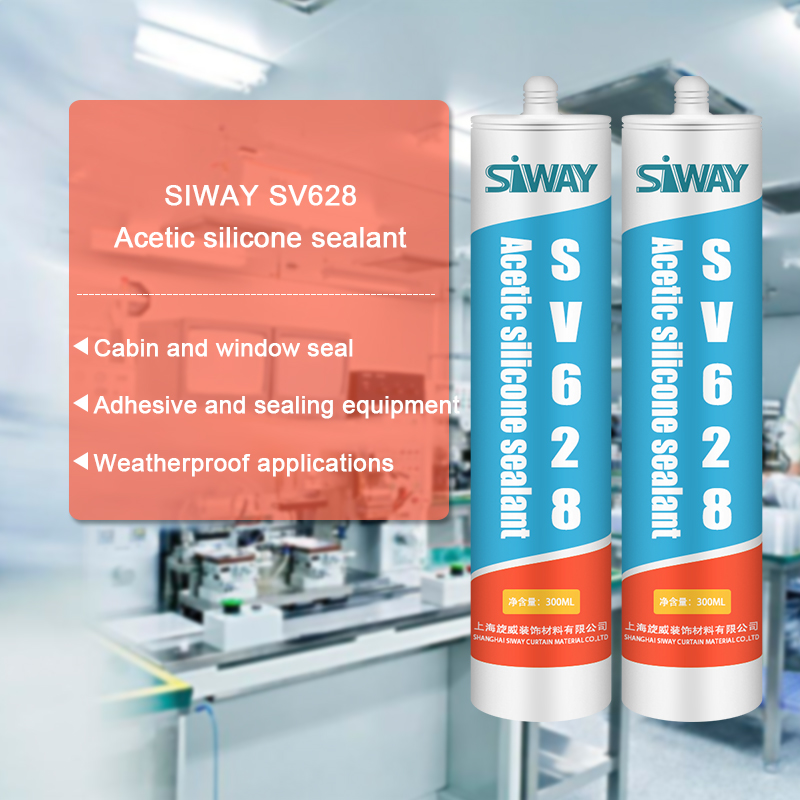Cheap PriceList for SV-8800 Silicone Sealant for Insulating Glass for Bolivia Importers
Short Description:
Description SV-8800 is two components, high modulus; neutral curing silicone sealant specifically developed for assembly of high performance insulated glass units as secondary sealing material. Where to use It is a two-component silicone that offers variable work life with high bonding strength to maintain the integrity of insulating glass unit, suits both commercial and residential IGU. Key Features 1. High Modulus 2. UV resistance 3. Low vapor and gas transmission 4. Primerless adhesion...
Every member from our high efficiency sales team values customers' needs and business communication for Cheap PriceList for SV-8800 Silicone Sealant for Insulating Glass for Bolivia Importers, Our mission is to help you create long-lasting relationships with your clients through the power of promotional products.
Description
SV-8800 is two components, high modulus; neutral curing silicone sealant specifically developed for assembly of high performance insulated glass units as secondary sealing material.
Where to use
It is a two-component silicone that offers variable work life with high bonding strength to maintain the integrity of insulating glass unit, suits both commercial and residential IGU.
Key Features
1. High Modulus
2. UV resistance
3. Low vapor and gas transmission
4. Primerless adhesion to coated glass
5. 100% compatible to SV-8890
Technical data sheet
| Test standard | Test project | Unit | value |
| Before curing——25℃,50%R.H. | |||
| GB13477 | Specific gravity(After mixing) | 1.33 | |
| GB13477 | Operating time | min | 20-40 |
| GB13477 | surface drying time(25℃,50%R.H.) | min | 80-188 |
| corrosivity | No | ||
| 7 days after curing——25℃,50%R.H. | |||
| GB/T 531 | Durometer Hardness | Shore A | 40 |
| GB13477 | The tensile modulus at 12.5% elongation | Mpa | 0.18 |
| The ultimate tensile strength | Mpa | 0.92 | |
| GB13477 | Elongation limit (fracture) | % | 150 |
Certification
GB-24266-2009;
Color
Component A(Base) – White, Component B(Catalyst)- Black
Package
1. Component A(Base): (190L), Component B(Catalyst) (18.5L)
2. Component A(Base):24.5kg (18L), Component B(Catalyst): 1.9kg (1.8L)
Shelf life
12 months
Note
If you want the TDS or MSDS or other details, please contact with our sales person.
Este segmento de video le mostrará cómo hacer un molde sencillo de dos piezas con uretano de goma moldeado de RTV. Ordenar ir a https://www.tapplastics.com/product/mold_making_materials/mold_making_supplies
Heat resistant products for fireplaces and stoves are many and varied, made to suit specific conditions. The products needed will vary based on whether the application is an open fire, free standing stove, or cassette fireplace.
Fire bricks, or refractory bricks, are used to line kilns, furnaces, and fireplaces. These bricks are made to withstand high temperatures, and they also have low thermal conductivity for energy savings. For applications typical in homes, such as natural gas fireplaces, more porous bricks can be used instead of the dense bricks used in wood-fired kilns or furnaces. The more porous bricks are much lighter and insulate better than dense bricks due to the tiny air pockets located throughout.
With open fires that use gas or solid fuel, a product called fire cement can be used to do small repairs to joints and cracks. Larger repairs can be done using fireplaace render or heatproof screed, a products that can withstand very high temperatures. If you need to fix tiles in part of your fireplace exposed to heat, you can use heat resistant tile adhesive.
If you are building a new fireplace or opening a chimney breast to create one, you can line the opening with fire bricks set in place with heatproof mortar. The mortar joints should be thin: 3 to 5 mm. Generally speaking, 10 kg of heatproof mortar can be used to place 100 standard sized fire bricks. Alternately, you can render over the existing brickwork with Fireplace Render to a thickness of approximately one inch. Heatproof Screed can also be used to create a base for the fire area. Free standing stoves can be lined with Fireplace Render as well.
Cassette fires (sometimes called “hole in the wall” fires) should have the area around the fire opening lined with heat resistant plaster that is made just for these kinds of fireplaces. Heat Resistant Plater is made to go onto Fireplace Render. This can be applied up to 5 mm thick.
You can also obtain a number of other heat resistant products for fireplaces. Special mortars and adhesives with high levels of silica are made for use with chamotte bricks, ceramic fiber, and insulating bricks. High alumina refractory mortars used with high aluminum refractory bricks are also available. The cements and mortars with the highest alumina content are also suitable with mag-chrome or magnesite bricks.
Premium fire cements come in beige or black and can be used for a number of applications domestically as well as industrially. Fire cement can be used in fireplace repairs, and in the assembly of cast iron stoves.


